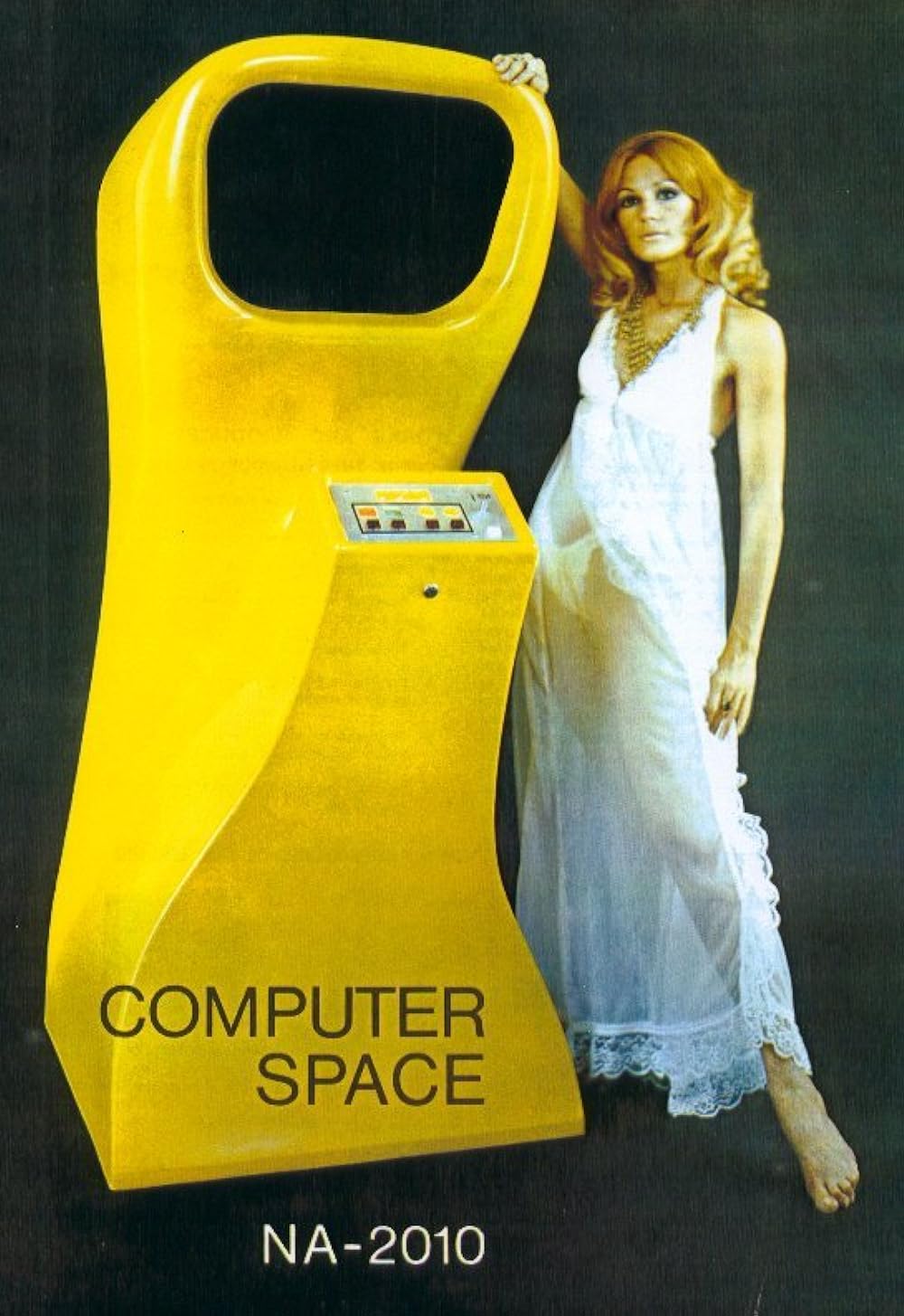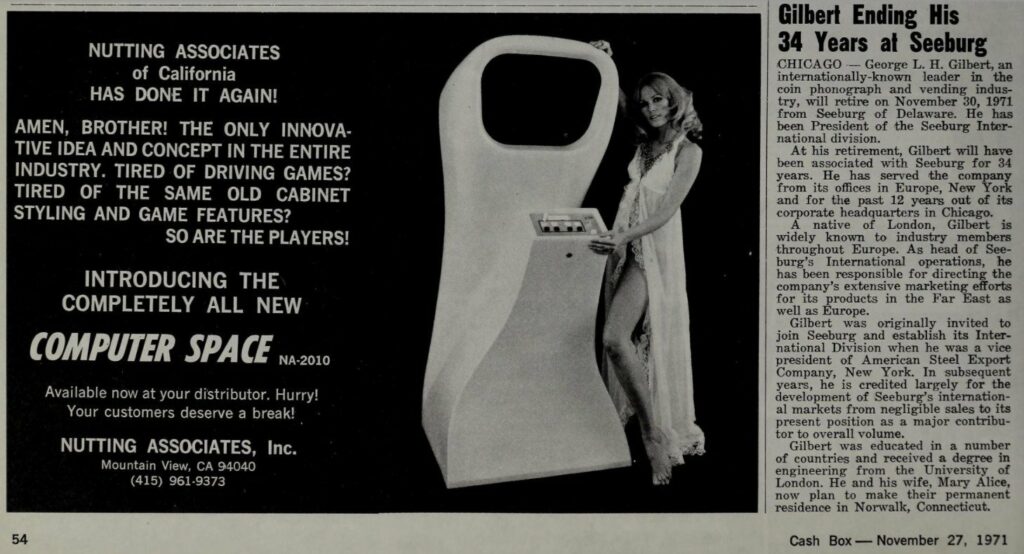Arcade Archives
COMPUTER SPACE: THE FIRST ARCADE GAME (EVER)
Who created the first arcade game and how can it's influence be seen in popular arcade games today?

The arcade game industry owes a whole lot to video game visionaries Nolan Bushnell and Ted Dabney. Though a series of rule breaking innovations and commercial risks, the pairs game “Computer Space” laid the groundwork for the phenomena of arcade games, inspiring a generation of game designers and paving the way for the legendary gaming empires like Atari. Dive into the history behind the first arcade game ever created, and it’s lasting influence on the industry today.

The Beginning of Computer Space
In the early 1960’s, a video game titled “Spacewar!” spread across the United States. Although calling this game a video game is slightly glorified, fans of Science Fiction stories and tech in general went crazy for it. One of these hyper fans was Nolan Bushnell, a young engineer who was, at the time, studying at the University of Utah and working part-time at an amusement centre. Upon playing “Spacewar!”, Bushnell was struck with the idea that this game would perform well in an amusement centre. However, he faced a slight issue. Building a machine to host the game required significant investment – which Bushnell, as a university student, was not close to having. Feeling beat down, Bushnell gave up on the idea of a “Spacewar!” inspired arcade game.
However, in the spring of 1970, things started to look up. By chance, Bushnell spotted an ad for a Data General Nova computer, which was set at an attainable price. Excited and re-inspired he rushed off to tell his friend, Ted Dabney, of his findings and after some discussion the pair agreed to work together to try and design a prototype of a “Spacewar!” game, made for amusement centres and public spaces. Following a series of both complications and solutions, Bushnell and Dabney founded Syzygy Engineering as an official company in January 1971, with a cash amount of US $350 each.
The Big Release and Public Reaction to the Game
In the fall of 1971, the game (now named “Computer Space”) was finished and it was time for the big reveal. Bushnell and Dabney decided to run testing for this arcade game at a bar near Stanford University, called the Dutch Goose bar. To their delight, the game was received with great enthusiasm from local pub-goers. This inspired Nutting Associates, who at this point were involved in providing resources and funding for the project, to develop a set of Computer Space arcades, which were then sent out for further testing.
Every business story has it’s moment of downfall. Unfortunately for Computer Space this moment came around quite quickly, as despite its innovative approach and the excitement surrounding its space combat theme, Computer Space did not achieve commercial success. Bushnell attributed this to the game’s complexity, which he felt was too challenging for the average player, unfamiliar with video games. This perception, combined with the novelty of video games at the time, led to modest sales.
However, just as every business venture has it’s pitfalls, it also sometimes has long term upsides. For Bushnell and Dabney, this – relatively momentous – benefit is that the learnings from Computer Space and their experience with Nutting Associates inspired them to start their own video game company, which we of course now know as Atari.

The Long-Term Impact of Computer Space
Although the success of Computer Space itself was modest, this game laid the foundation for various iconic arcade games that still lead the retro game industry today. The most notable of these was Pong, which was developed by Bushnell and Dabney soon after Computer Space’s release, and is responsible for the the explosive growth of the arcade gaming industry in the 1970’s and 1980’s.
At Maison Roshi, what stands out most to us about Computer Space besides the inspiring, innovation filled story behind it, is the design of the arcade cabinet itself, as well as the ads that were crafted around it. Call us critical but we find that the look of this arcade, which came in various sleek colour-ways and a space-age-esque minimal design, is remarkably timeless compared to it’s later counterparts. Moreover, as mentioned and seen in the images above, the adverts for Computer Space were particularly eye-catching – they’ve definitely inspired us in our projects!
Computer Space was an iconic game, and it’s legacy lives on in the arcade games still adored today. Pro tip: If you happen to find one of these old arcade cabinets laying around, they now resell for about 60,000 US dollars – so think twice before you discard of it!
